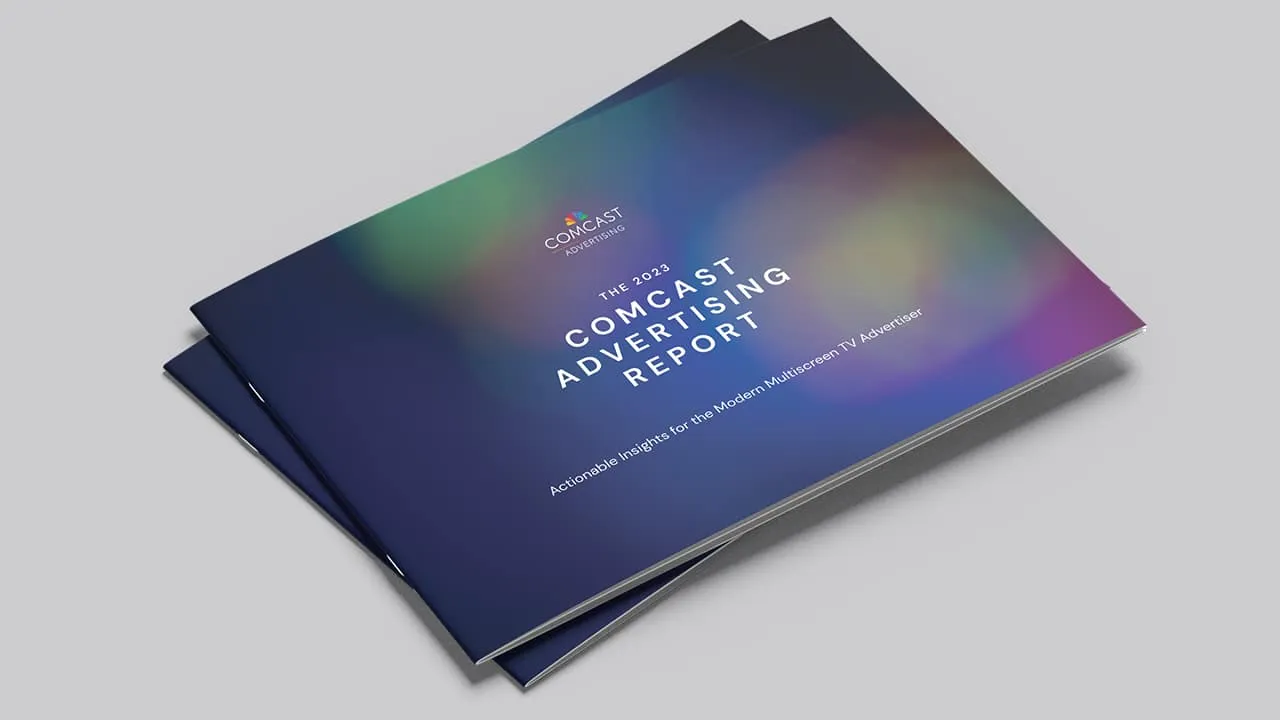The Intersection of Viewing, Buying and Selling with the Comcast Advertising Report

The media landscape is not unlike a big jigsaw puzzle, where disparate data needs to be interlocked and then interpreted in order to see the full picture of behaviors and results. Comcast Advertising recently released its second annual Comcast Advertising Report, which provides an understanding of the dynamics of the TV advertising industry from the perspective of viewers, buyers and sellers "Insights like viewership and exposure data are what fuel campaign success, and we're in a position to distill and distribute actionable insights for modern marketers to help them become savvier," noted Travis Flood, Executive Director of Insights for Comcast Advertising.
According to Flood, the merged data focuses on three industry tentpoles – viewers, buyers and sellers. "We evaluate our data and see what has repeatedly shown up that we think is interesting," he explained. One big takeaway is that "TV is the foundation of ad campaigns and still drives the majority of reach. Streaming is an audience extension that we expect to grow over time. We're here to help leverage the advantages of both for our advertisers and for the marketplace." However, to the viewer, TV and streaming are both viewed on the same screen and are therefore considered somewhat the same.
One big takeaway was the viewers' continued preference for the big screen. "We think that has a benefit because that allows advertisers to maximize their connections to audiences. Eighty-two percent of streaming impressions are happening on the big screen. Last year it was 77%," noted Flood.
In last year's study, "Share of reach for traditional TV was 82%. Nine percent came from streaming-only, and 9% were reached by both," he noted, "This year those same numbers, instead of 82, 9 and 9, are 78, 10 and 12. So you'd say, wow, it's still relatively strong for television, but the streaming is up a third from what it was last year. We're seeing movement, but it's not drastic."
Furthermore, the study found that traditional TV continues to drive reach, with a caveat. "We still drive the majority of our reach with traditional television, but maximizing incremental reach is a challenge in today's marketplace. How are you driving it? How much traditional TV should I have? How much streaming? Should I buy addressable? Should addressable be the focus of my campaign, or should it be a tactic on top of that? Then, because we work in a premium video environment, we look at types of customers and the type of content. We want to maximize that connection," he stated.
One of the big misconceptions among advertisers is that traditional TV is diminishing in impact. This is a mistake according to Flood because "They may be giving up on where they can maximize their reach. What we've seen is when people invest more in streaming, they get more to begin with, but after a point, as they invest even more in streaming, they start talking to the same people over and over again. There's a diminishing return at some point as you sacrifice linear reach for streaming frequency in a lot of cases."
Finally, the growth of FAST (Free Ad Supported TV) services has accelerated. "Last year in this report, FAST was really an introduction. This year nearly half of all OTT impressions were served through FAST. That's a really important stat because it has a significant volume to it," he stated and added, "FAST services have been a way for viewers to engage with content in different ways."
When it comes to programmatic, "The space is growing every year, but we see hesitance for a couple of reasons," Flood said. "Sellers may be wary about selling programmatically. They think it could degrade their content and downgrade the potential to maximize revenue. Buyers also may not be set up to transact programmatically. We tend to talk about programmatic just being a way to buy in an automated way."
Looking ahead, Flood sees a convergence between traditional TV and streaming, but it will happen slowly over time. "You'll continue to see convergence of the two," he posited. "TV will become more like digital or streaming in the way it's bought, with more targeting capabilities through tactics like addressable. Hopefully, you'll have a unified approach to measurement across both television and streaming, especially as there is more connecting of first-party data." He added that, "Industry collaboration will continue because in a world where you want TV to be more like digital, it requires a lot of groups to collaborate with one another. But it won't happen on its own. The industry has to be behind it and help guide it through the process."
Ultimately for advertisers who want to maximize their impact, "There is no magic bullet or a one-size-fits-all approach. You can't just do streaming or just traditional TV. It's a combination of all of those," he noted. "It's important to be talking to your customers who buy from you today, as well as those who will buy from you tomorrow. For your current customers, have a message that's more addressable. For those in the future, concentrate on broader reach." But since advertisers need to reach both current and future customers, "You essentially need both strategies together, and once you implement those two strategies, you have those data-driven techniques and you can split it up between TV and streaming," he concluded.
Click the social buttons to share this story with colleagues and friends.
The opinions expressed here are the author's views and do not necessarily represent the views of MediaVillage.org/MyersBizNet.


